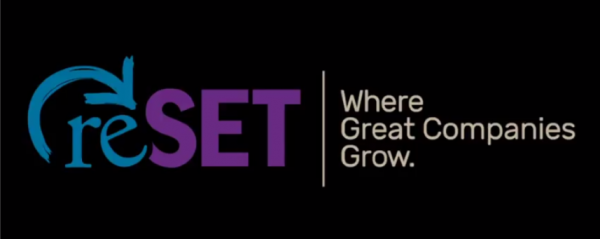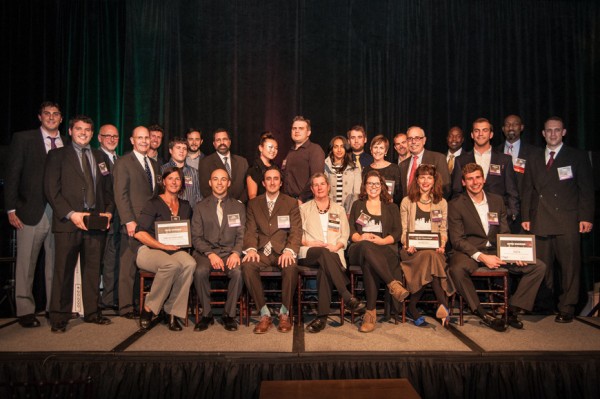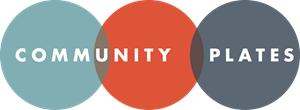Fledgling "Businesses with Impact" Recognized, Receive Funds to Propel Start-Up
/When reSET, the Social Enterprise Trust, whose mission is advancing the social enterprise sector, revealed the winners of its annual Impact Challenge last week, the top award recipient was FRESH Farm Aquaponics, with Movia Robotics, Planet Fuel Beverage Company, Hartford Prints! and Parrot MD rounding out the top five.
While the businesses may not be household names, they do represent an increasing number of start-up businesses that are not only seeking a foothold in their respective industries, but are looking to contribute to their community – locally or globally – along the way.
Based in Hartford, FRESH Farm Aquaponics is devoted to providing “the best quality aquaponic food to our community sustainably, teaching a new generation with aquaponics, and engaging the community to develop a local food ecosystem.” The company proclaims “expect from us the best produce available locally, year round in the Hartford County area. You will also see us engaging local schools in pioneering aquaponic experiments from elementary schools to universities.” (see video below)
Planet Fuel is a  sustainable lifestyle beverate brand for teens and tweens. The company's goal is to inspire young people to realize the power of consumer choices to effect social and environmental change.
sustainable lifestyle beverate brand for teens and tweens. The company's goal is to inspire young people to realize the power of consumer choices to effect social and environmental change.
MOVIA Robotics provides an innovative approach in educating children with autism to "form connections inside the world we live in today." The company uses robots and develops "our own software based on interactions with therapists and children."
Now in its fifth year, the reSET Impact Challenge recognizes the most innovative and impactful early stage ventures and start-ups from all industries throughout New England. The event, held at The Society Room of Hartford, saw a record, sellout crowd of 300 in attendance.
Diamond Level - $20,000 + Professional Services Package (1 Winner)
FRESH Farm Aquaponics (http://www.freshfarmct.org)
Gold Level - $10,000 + Professional Services Package (2 Winners)
Movia Robotics (www.moviarobotics.com)
Planet Fuel Beverage Company (http://www.planetfuel.com)
Silver - $5,000 + Professional Services Package (2 Winners)
Hartford Prints! (hartfordprints.com)
Parrot MD (parrotmd.org)
People’s Choice - $1,500 + Professional Services Package (1 Winner)
BookBugs (www.bookbugs.net)
Investor’s Choice - $1,500 (1 Winner)
Send Help Back Home (www.sendhelptoday.com)
Bronze - $500 (7 Winners)
Asarasi, Inc. (www.asarasi.com)
Beautiful Day / Providence Granola Project (www.providencegranola.com)
BookBugs (www.bookbugs.net)
Daily General Counsel (www.dailygeneralcounsel.com)
Dream See Do (https://www.dreamseedo.org)
Hugo & Hoby (www.hugoandhoby.com)
LOTUS Alliance LLC (www.lotusalliance.org)
 The five awards judges - Sherrell Dorsey of Uber and Triple Pundit, Adam Dotson of Ironwood Capital, Claire Leonardi, an advisor to reSET's Social Enterprise Investment Fund and former CEO of Connnecticut Innovations, Anthony Price of LootScout and Paul Witinski of Ironwood Capital - narrowed down more than 100 applicants to 12 honorees. The People’s Choice winner was selected via more than 1,800 online votes.
The five awards judges - Sherrell Dorsey of Uber and Triple Pundit, Adam Dotson of Ironwood Capital, Claire Leonardi, an advisor to reSET's Social Enterprise Investment Fund and former CEO of Connnecticut Innovations, Anthony Price of LootScout and Paul Witinski of Ironwood Capital - narrowed down more than 100 applicants to 12 honorees. The People’s Choice winner was selected via more than 1,800 online votes.
Since its inception, reSET’s Impact Challenge has awarded more than $180,000 to scaling entrepreneurs. reSET is a nonprofit organization whose mission is advancing the social enterprise sector. Its strategic goals are threefold: to be the “go-to” place for impact entrepreneurs, to make Hartford known as Impact City, and Connecticut the Social Enterprise state. In addition to providing co-working space, accelerator and mentoring programs, reSET aims to inspire innovation and community collaboration, and to support entrepreneurs in creating market-based solutions to community challenges. reSET’s goal is to meet entrepreneurs wherever they are in their trajectory and to help them take their businesses to the next level.
reSET’s Impact Accelerator recently was a winner of the U.S. Small Business Administration Growth Accelerator Competition, the only Connecticut growth accelerator to receive the award this year.
https://youtu.be/A03RH_htQ88




 The organization is driven by volunteers – food donors, food runners and partner agencies. One such agency in Connecticut is the Manchester Area Conference of Churches, which indicates there are 8,000 food-insecure people in the greater Manchester area.
The organization is driven by volunteers – food donors, food runners and partner agencies. One such agency in Connecticut is the Manchester Area Conference of Churches, which indicates there are 8,000 food-insecure people in the greater Manchester area.

 Medical technology creates more than two million jobs directly and indirectly across the United States. The industry is one of the few U.S. manufacturing sectors that is a net exporter, and its innovations help reduce the human and economic burden of chronic disease. Industry officials point out that while U.S. leads the world in the development of new medical technology, the device tax “threatens that leadership.”
Medical technology creates more than two million jobs directly and indirectly across the United States. The industry is one of the few U.S. manufacturing sectors that is a net exporter, and its innovations help reduce the human and economic burden of chronic disease. Industry officials point out that while U.S. leads the world in the development of new medical technology, the device tax “threatens that leadership.”



 Officials cite studies that show many abused prescription drugs are obtained from family and friends, including from the home medicine cabinet. In addition, manyAmericans do not know how to properly dispose of their unused medicine, often flushing them down the toilet or throwing them away – both potential safety and health hazards.
Officials cite studies that show many abused prescription drugs are obtained from family and friends, including from the home medicine cabinet. In addition, manyAmericans do not know how to properly dispose of their unused medicine, often flushing them down the toilet or throwing them away – both potential safety and health hazards.


 The CDC’s recommendations in August came a year after the American Academy of Pediatrics urged schools to adjust start times so more kids would get the recommended 8.5 to 9.5 hours of nightly rest. Both the CDC and the pediatricians’ group cited significant risks that come with lack of sleep, including higher rates of obesity and depression and motor-vehicle accidents among teens as well as an overall lower quality of life, The Atlantic recently reported.
The CDC’s recommendations in August came a year after the American Academy of Pediatrics urged schools to adjust start times so more kids would get the recommended 8.5 to 9.5 hours of nightly rest. Both the CDC and the pediatricians’ group cited significant risks that come with lack of sleep, including higher rates of obesity and depression and motor-vehicle accidents among teens as well as an overall lower quality of life, The Atlantic recently reported.

 “The major health issues that people are most worried about for children across the country reflect the health initiatives providers, communities and policy makers should be focused on,” says Matthew M. Davis, M.D., M.A.P.P., director of the National Poll on Children’s Health and professor of pediatrics and internal medicine in the Child Health Evaluation and Research Unit at the U-M Medical School.
“The major health issues that people are most worried about for children across the country reflect the health initiatives providers, communities and policy makers should be focused on,” says Matthew M. Davis, M.D., M.A.P.P., director of the National Poll on Children’s Health and professor of pediatrics and internal medicine in the Child Health Evaluation and Research Unit at the U-M Medical School.
 The most recent fee data available from 2-1-1 Child Care estimates the statewide average cost of full-time child care in a licensed center-based day care setting is $211/week for 1 preschooler and $253/week for an infant, which adds up to $2,011 per month. This may be less than what many Connecticut families pay for child care each month, due to variations in cost and availability throughout the state, differences in family size, and other costs associated with child care that are not included—such as the cost of alternate care arrangements when the child care setting is closed
The most recent fee data available from 2-1-1 Child Care estimates the statewide average cost of full-time child care in a licensed center-based day care setting is $211/week for 1 preschooler and $253/week for an infant, which adds up to $2,011 per month. This may be less than what many Connecticut families pay for child care each month, due to variations in cost and availability throughout the state, differences in family size, and other costs associated with child care that are not included—such as the cost of alternate care arrangements when the child care setting is closed

 inesses, they’re pushing the envelope - hoping to surpass 1,000 participants.
inesses, they’re pushing the envelope - hoping to surpass 1,000 participants. 

























